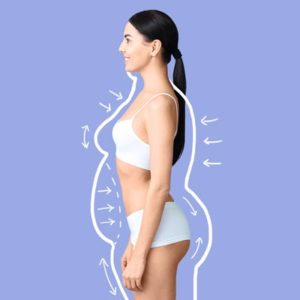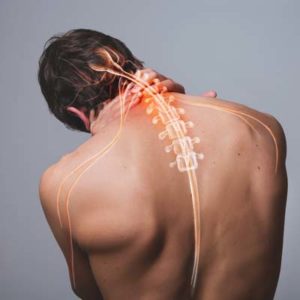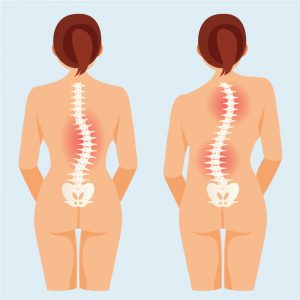Last Modified on October 29, 2025 by Dr. Tyler Meier

Can neck pain cause headaches and dizziness? The answer is yes – neck pain absolutely can cause headaches and dizziness. In fact, these symptoms are more connected than most people realize.
Your cervical spine doesn’t just support your head. It houses critical nerves, blood vessels, and proprioceptive sensors that control balance, blood flow, and pain perception. When your neck alignment suffers, everything downstream pays the price.
Let’s explore exactly how this happens and what you can do about it.
Understanding the Link Between Neck Pain, Headaches and Dizziness
Your Neck’s Connection to Your Brain
Your cervical spine serves as the highway between your brain and body. Seven vertebrae protect your spinal cord while allowing remarkable mobility. This same flexibility, however, makes your neck vulnerable to misalignment and injury.
The upper cervical region – specifically the atlas (C1) and axis (C2) vertebrae – sits directly beneath your skull. These vertebrae house nerve pathways that influence headache patterns, dizziness perception, and even nausea.
The Role of Posture and Alignment
Proper cervical alignment maintains optimal nerve function and blood flow. When your head shifts forward – even by an inch – the weight your neck muscles must support increases exponentially.
Why Upper Neck Dysfunction Triggers Multiple Symptoms
Misalignment in your upper cervical spine creates a cascade effect. Compressed nerves send pain signals to your head. Reduced blood flow decreases oxygen delivery to your brain. Disrupted proprioception – your body’s awareness of position in space – causes dizziness and imbalance.
These aren’t separate problems. They’re interconnected symptoms of the same structural issue.
How Neck Problems Can Cause Headaches and Dizziness
Cervicogenic Headaches: Pain Originating from Your Neck
A cervicogenic headache starts in your neck but you feel it in your head. Unlike migraines or typical tension headaches, these headaches have distinct characteristics.
Common symptoms include:
- Pain beginning at the base of your skull
- Discomfort radiating to your temples or behind your eyes
- One-sided head pain that doesn’t switch sides
- Pain triggered by neck movements or sustained postures
- Reduced neck range of motion
Cervicogenic Dizziness: When Your Neck Affects Your Balance
Cervicogenic dizziness occurs when neck problems disrupt your balance system. Your cervical spine contains proprioceptive sensors that constantly inform your brain about head position and movement.
When cervical misalignment occurs, these sensors send faulty signals. Your brain receives conflicting information from your neck, eyes, and inner ears – creating sensations of dizziness, unsteadiness, or lightheadedness.
Signs your dizziness stems from neck issues:
- Dizziness triggered by neck movements
- Unsteadiness without true spinning sensation
- Symptoms accompanying neck pain or stiffness
- Worsening with prolonged poor posture
- Relief when lying down
Muscle Tension, Poor Posture and “Tech Neck”
Forward head posture – what we call “tech neck” – has become an epidemic in our screen-dominated world. This posture forces your suboccipital muscles (small muscles at the skull base) to work overtime maintaining head position.
These chronically tight muscles compress nerve endings and restrict blood flow. The result? Tension headaches that feel like a tight band around your head, often accompanied by neck stiffness.
Ergonomic adjustments that help:
- Position screens at eye level
- Take breaks every 30 minutes to move your neck
- Perform chin tuck exercises throughout the day
- Avoid cradling phones between shoulder and ear
Reduced Blood Flow from Neck Misalignment
Your vertebral arteries run through small channels in your cervical vertebrae, delivering blood to your brainstem and cerebellum. Abnormal neck curvature can compress these vital vessels, reducing oxygen and nutrient delivery to your brain.
This vascular compression contributes to both headaches and dizziness. Restoring normal cervical alignment literally opens up blood flow pathways, improving brain function and reducing symptoms.
Other Medical Causes to Consider
Not every headache or dizzy spell stems from neck problems. Other potential causes include:
- Classic migraines with or without aura
- High blood pressure or cardiovascular issues
- Dehydration and electrolyte imbalances
- Ear infections or vestibular disorders
- Sinus infections creating pressure
Red flags requiring immediate medical attention:
- Sudden, severe “thunderclap” headache
- Dizziness with vision changes, numbness, or weakness
- Difficulty speaking or understanding speech
- Loss of consciousness
- Headache following head trauma
These symptoms could indicate stroke, aneurysm, or other emergencies. Seek immediate care if you experience them.
See more: Chiropractic Adjustments for Neck Pain: A Natural Path to Relief
How Chiropractic Care for Neck Pain and Dizziness Works
Restoring Alignment Reduces Nerve Irritation
Proper spinal alignment eliminates abnormal pressure on nerves. When those upper cervical nerves stop being compressed or stretched, the pain signals to your head diminish or disappear entirely.
Think of it like taking your foot off a garden hose. Once the pressure releases, flow returns to normal. The same principle applies to nerve function.
Improving Proprioception and Balance
Correcting cervical misalignment restores accurate proprioceptive signaling. Your brain receives correct information about head position, eliminating the sensory mismatch that causes cervicogenic dizziness.
Patients often report that the “foggy” feeling they didn’t even realize they had lifts once their neck alignment improves.
Decreasing Muscle Tension
When your spine sits in proper alignment, your muscles don’t have to work as hard to hold your head up. This reduces chronic tension in the suboccipital and upper trapezius muscles that contribute to tension-type headaches.
Many patients notice their shoulders feel lighter and their neck moves more freely – benefits that extend beyond just headache relief.
Your Path to Relief Starts with Understanding
The connection between neck pain, headaches and dizziness isn’t mysterious – it’s biomechanical. When your cervical spine loses its proper alignment, multiple systems suffer. Nerves get irritated, blood flow decreases, and balance signals malfunction.
But here’s the encouraging truth: these problems respond remarkably well to proper structural correction. By addressing the root cause – your spinal alignment – rather than just treating symptoms, you can achieve lasting relief.
At CorePosture Chiropractic, we’ve helped hundreds of patients break free from the cycle of chronic headaches and dizziness. We’ll use advanced imaging and analysis to pinpoint exactly what’s happening in your cervical spine. Then we’ll create a customized correction plan designed specifically for your structural needs.
Your journey to clarity, comfort, and better health starts with understanding and we’re here to guide you every step of the way. Don’t let another day pass dealing with symptoms that can be corrected. Reach out to our chiropractor Newport Beach office today.
FAQs
Can neck pain really make you dizzy or lightheaded?
Absolutely. Your cervical spine contains proprioceptive sensors and houses blood vessels that supply your brain. When neck problems disrupt these systems, dizziness and lightheadedness commonly result.
Is cervicogenic dizziness treatable with chiropractic care?
Yes. Research consistently shows that addressing cervical dysfunction through chiropractic posture correction reduces or eliminates cervicogenic dizziness. The key is identifying and correcting the underlying structural problems causing the symptoms.
How long before I notice improvement after CBP treatment?
Most patients notice some improvement within 4-6 weeks. Significant structural changes typically require 12-16 weeks of consistent care. Remember, your current alignment developed over months or years – reversing it takes time.
Can poor posture cause headaches every day?
Yes. Chronic forward head posture creates constant strain on cervical structures. This sustained tension can absolutely trigger daily headaches, especially if you spend hours at computers or looking down at devices.

Dr. Tyler Meier is a board-certified, licensed chiropractor and founder of CorePosture Chiropractic in Newport Beach, CA







